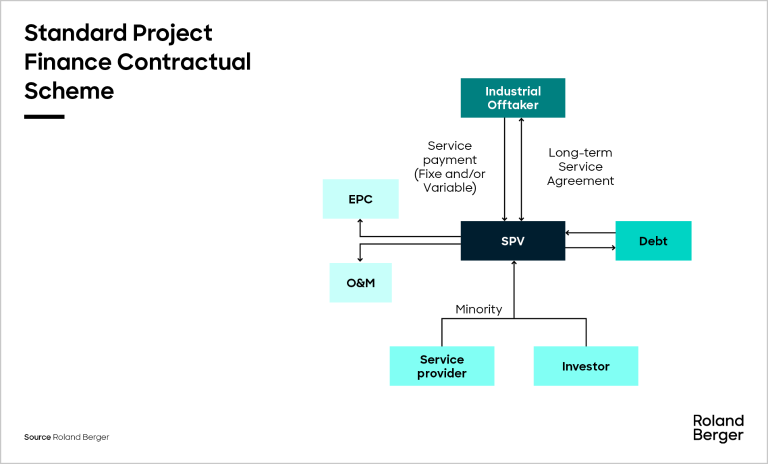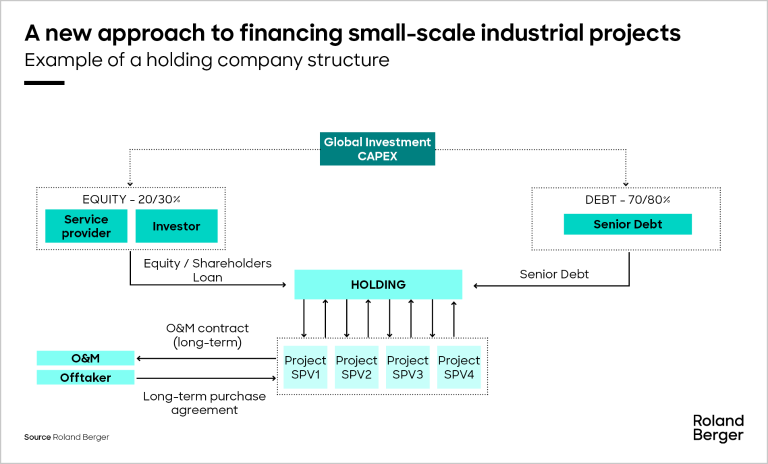Water Management
Action on water management is required from all members of society. Companies have a special responsibility to address the challenges ahead and can make valuable contributions to sustainability.


Increasingly, industrial players, particularly ones that consume large volumes of water, are investing in innovative water conservation and reuse projects – which solution providers are eager to support. Neither party, however, is keen on bearing the significant capital investment required to implement projects upfront.

With growing water scarcity upping the pressure on governments and water-intensive businesses, many organizations, particularly those in food production, manufacturing, fashion, or mining, are looking to invest in and implement innovative water conservation and reuse projects. This is welcome news for solution providers, who are keen to work with major industrial players.
However, the reality is that industrials would often prefer not to own water-related assets or provide the significant capital investment required to implement projects up front. Demand is shifting from equipment supply and short-term operations contracts to long term service provision through a “water as a service” models.
Similarly, solution providers are more interested in focusing on their core technical and operational expertise, as opposed to acting as a bank, and would prefer to identify an investment partner to avoid bearing the full burden of the CAPEX.
Additional complexity arises from the fact that outsourcing structures are more complex and costly to put in place, while most industrial projects are of a small scale (capital expenditure under $30m) – thus making it an uneconomical approach on a standalone basis.
This catch-22 is resulting in a new, ‘platform’ approach to financing small-scale projects that enables both sides to achieve economies of scale. We are increasingly seeing this approach utilized in both the water and waste sectors as a means of overcoming the issue of scale and bringing together partners with converging interests, as well as catering to the needs of needs of industrial companies with multiple production sites in different geographies.
The typical project finance structure for an industrial outsourcing project would rely on a Special Purpose Vehicle (SPV) to lead the implementation and required investment in a specific project; sub-contracting the Engineering, Procurement and Construction (EPC) and the Operations and Maintenance (O&M). The SPV would be funded by equity from its shareholders, such as a solution provider and a financial investor, as well as debt from banks. The SPV would enter into a long-term service agreement with the industrial client, and in exchange, receive a pre-agreed tariff.

The newer approach involves a solution provider and an investor partnering to create a vehicle to develop, invest in, and manage a pipeline of multiple projects. This approach has been frequently used in other sectors where projects are of a standardized nature, such as renewable energy, but is only just emerging in the water and waste sectors.
This structure maximizes the benefits of standardization and replicability to save costs and time. With a single investment partner and an established framework, projects can be implemented more efficiently.
The platform can have its own dedicated business development team, enabling the solution provider to share costs and efforts with its investment partner.
Investment decisions are delegated to the platform’s management team, which would include its own board and investment committee, further streamlining the approval process.

This platform structure can cover multiple countries and project types. For instance, it can be created with a multi-utilities approach in mind and pool together projects of different nature, such as water, wastewater, waste-to-energy.
It is to be noted, however, that investing in projects with very different risk profiles would make it more challenging for the investor to assess and commit upfront.
To improve the likelihood of success, both partners would need to agree on key investment criteria such as:
Initial projects would typically be financed through full equity, to avoid the added complexity of involving lenders, and once the platform has reached sufficient scale and the first projects are in operations (and therefore with a lower risk profile), the partners can raise debt on the portfolio and leverage the platform. This enables the platform to recycle some of its capital in new projects, without raising additional equity from shareholders.
In the event the solution provider doesn’t want to “sub-contract” business development to the platform and limit its role to financing projects, it can still recover some of its costs at financial closing of a transaction through a success fee mechanism.
This approach supports service providers, industrials, and investors in overcoming the challenges of effectively investing in and implementing smaller-scale water and waste projects. Industrials benefit from the new solution, without outlaying the capital cost, while the service provider can focus on providing technical and operations support and offering a full package solution, including the financing of the assets.
Moreover, having an established, proven vehicle in place enables service providers to be much more responsive to the demands of their clients, and creates a true commercial advantage over competitors without such a partnership in place. The financing partner can also source project opportunities of its own, for example through industrial companies in its investment portfolio, which may require additional water, waste, or waste-to-energy facilities.
Similarly, the platform approach gives investors access to a breadth of opportunities that would otherwise not be as ‘investable’ on an individual basis, due to their size.
Aggregating small projects together and having a long-term commitment to jointly develop and fund a significant pipeline of projects gives them access and visibility and can improve the risk-to-return ratio through a portfolio effect.
We see this approach as being highly applicable to industrial outsourcing projects in both the water and waste sectors. Nevertheless, there are several factors that should be considered to improve the likelihood of success with this approach.
First and foremost is the identification and selection of the right partners and consideration as to how the arrangement will be aligned. Solution providers and financial investors have different approaches, roles, and constraints.
For instance, a service provider is typically looking at operating those assets on a long-term basis (15 or 20 years), while financial investors such as infrastructure funds have generally an investment horizon of five to seven years.
Another critical aspect is the return to the shareholders, as the financing partner will receive only an equity Internal Rate of Return (IRR) while the solution provider will also have a margin on the EPC and the O&M, and will, therefore, assess projects on a blended return basis.
It is key to give comfort to the investment partner by ensuring transparency, avoiding “value drain” to the EPC and O&M contracts. This can be achieved through open book procedures or independent oversight on behalf of both shareholders.
A thoughtful and strategic selection process is necessary to bring together the right partners and design the appropriate structure for such a venture to be successful. If you would like to explore how this approach might suit your organization, please feel free to get in touch.
Stay current with our latest insights on water, sustainability and climate action topics. We will email you when new articles and studies are published.